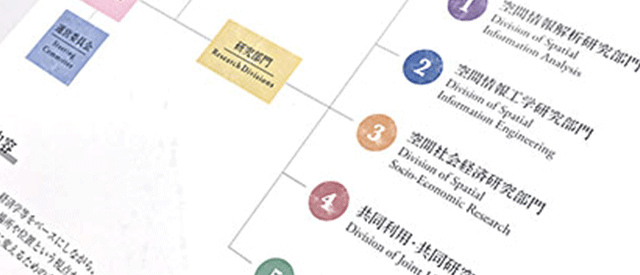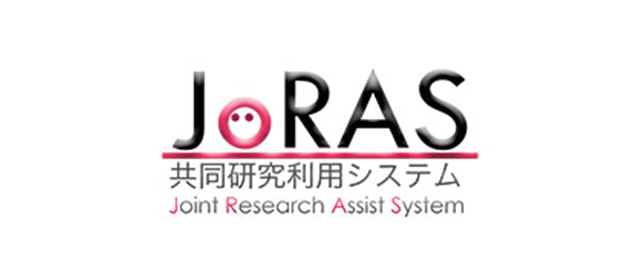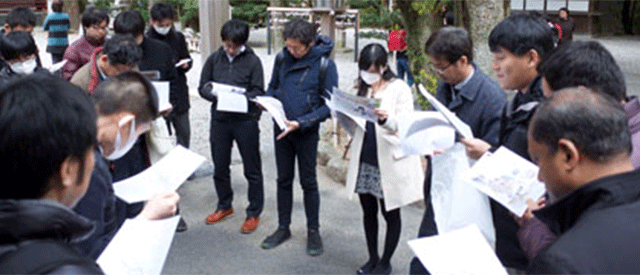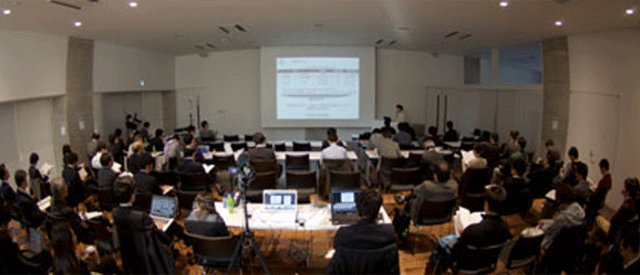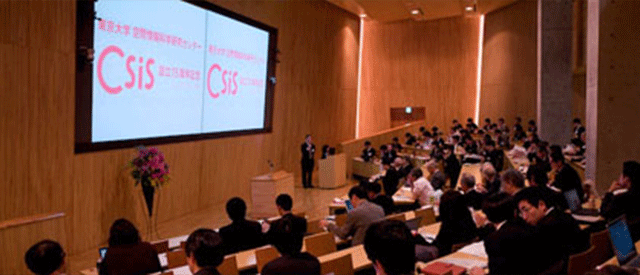Professor, Division of Spatial Information Engineering
Further information is available at http://www.mcl.iis.u-tokyo.ac.jp/
Context aware services
This research aims at constructing an architecture for flexible context aware services, where the intent of users are proactively recognized and their activities are properly and comfortably supported. Among them, physical location of users is the most important “context”. Thus, in this research we especially focus on the location dependent routing and network services. While the conventional routing of internet and PSTN both depend on the logical user address as IP address and telephone number, we are studying the routing architecture which depend on the physical location of the users and the intermediate nodes. By using it, we can deliver necessary information to the user of a specific physical location. We are also studying the enhancement of this architecture to the multicast case which is called geo-cast. By geo cast, we can deliver necessary information to the users of a specific geographical region, say within 100m from Tokyo station. Based on location dependent routing, various network services can be provided. For example, in an emergency, refuge alert can be promptly delivered to the proper geographical location, which might help the mitigation of disaster such as earthquake and fire.
Haptic collaboration and its applications
Communication via networks has been based on voice and image media for over 100 years. On the other hand, various haptic devices, by which the sense of touch and force are sensed and fed back to the users at the same time, is now available as commercial products. Thus haptic communication is now becoming realistic and applications using them are also emerging and expected as one of the promising killer applications. However, since haptic collaboration and communication have been studied mainly by researchers of robotics, the effect of networks connection haptic devices have been ignored. In other words, the networks have been treated as ideal. But, in reality, the quality of the haptic collaboration highly depends on the network impairments.
From this point of view, we are studying various issues related to keeping the subjective quality of haptic applications as high as possible under such network impairments as bandwidth limitation, latency, jitter and loss of information. The examples are coding of haptic media, media synchronization for the compensation of the delay and jitter, various method for error correction including dead-reckoning.
Study on high-speed networks
We have been studying the various topics on the operation of very high speed networks. As for the network elements, we are interested in very high speed node systems as a very lager scale ATM switch fabric and optical switch for WDM networks. From the viewpoint of network planning, we proposed the optimization method of the fiber network where the dominant traffic is broadband multicast/broadcast, the dynamic distribution algorithm of VOD servers and fast wavelength path assignment algorithm for WDM networks. We have been also studying the protocol design of layered transmission and layered multicast. Transparent media scaling by the combination of above protocols and layered coding of images have been also proposed.
教授 空間情報工学研究部門
個人ページ: http://www.mcl.iis.u-tokyo.ac.jp/アドホックネットワークとセンサネットワーク
アドホックネットワーク・無線センサネットワーク構築のための諸課題の検討を行っている.ルーティング手法,分散的スケジューリング手法,時刻同期手法の提案を既に行っている.また,センサネットワークなどデータセントリックな通信に適した新しいアドレス体系である時空間アドレスの概念の提案と実装を行いつつある.また,モビリティを持つ端末間でアドホックネットワークを用いて時空間アドレスを交換することにより,それぞれの端末の持つ位置情報の精度を高める手法についての検討を行っている.また,アドホ固定のセンサのみでは環境情報を効率的に収集することが困難な状況下で,車やロボット等の動くオブジェクトにセンサを搭載することにより,通信効率・情報収集効率を向上させるロボットセンサネットワークシステムの構築とその制御手法の検討を行っている.位置依存型サービス
ユーザのおかれている状況を先取りして汲み取った上でサービスを提供するコンテクストアウエアサービスを柔軟に提供する機構についての研究を行っている.その中でも,実空間における「ユーザの物理的位置」が最も重要なコンテクストであるという観点から,位置情報を主体としたサービス構築のためのルーティング手法を検討すると共に,時空間型のクエリの新たな記述方法とそれに適した分散システムについての検討を行っている.ロケーションプライバシー
位置情報の活用化が望まれる一方で,個人情報としての位置情報の匿名性を確保する技術の確立が強く要請されている.このような観点から,ユーザのモビリティを利用しながらユーザの位置情報を隠蔽するロケーションプライバシー技術の概念提案を行い,GPSのような連続的な測位を行う場合とRFIDを用いる場合のように,測位可能な点が離散的な場合の両方に適用可能とした.またRFIDを用いる場合に問題となってくる各種のセキュリティ上の攻撃方法に対する解決策の研究を行っている.




